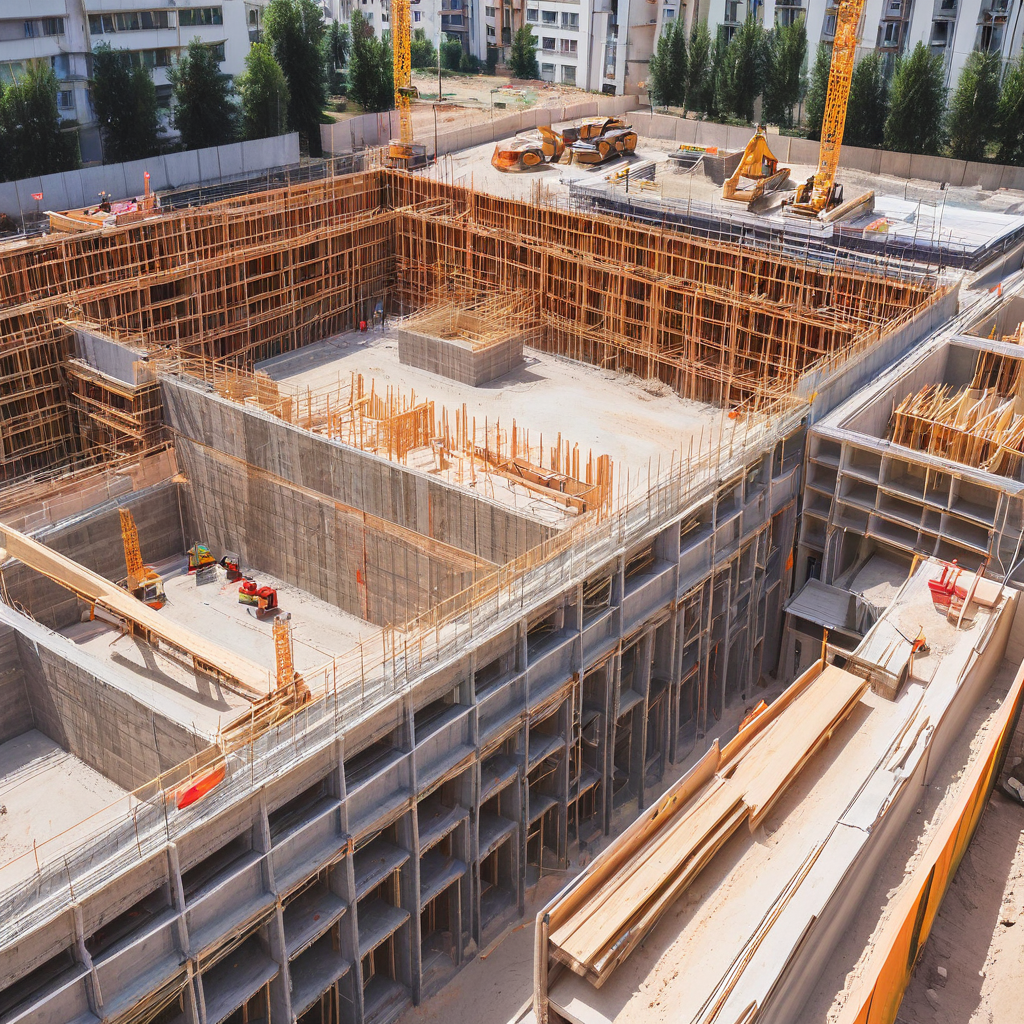
Climbing formwork systems are innovative construction tools that revolutionize the process of building vertical structures, such as high-rise buildings, bridges, and towers. These advanced formwork systems offer efficiency, flexibility, and safety advantages compared to traditional formwork methods, allowing construction projects to progress smoothly and rapidly. This article serves as a comprehensive guide to exploring climbing formwork systems, highlighting their features, benefits, applications, and considerations for successful implementation in construction projects.
What is Climbing Formwork?
Climbing formwork is a self-climbing system used in concrete construction to create vertical formwork for walls, columns, and other structural elements. Unlike traditional formwork that requires manual dismantling and reassembly for each pour, climbing formwork systems enable continuous upward movement, allowing construction to proceed at a steady pace without interruptions. These systems consist of formwork panels, climbing units, hydraulic systems, and safety features designed to support the weight of concrete and workers during construction.
Types of Climbing Formwork Systems:
- Hydraulic Climbing Formwork: Utilizes hydraulic jacks to lift the formwork system vertically, enabling controlled and synchronized climbing movements for precise concrete placement.
- Climbing Protection Panels: Provides safety screens and guardrails that move up with the climbing formwork to protect workers from falls and ensure a secure working environment at heights.
- Automatic Climbing Formwork: Incorporates automated mechanisms for self-climbing operations, reducing manual labor and increasing productivity on large-scale construction projects.
- Jump Form Systems: Combines climbing formwork with jump platforms for vertical and horizontal movement, allowing for rapid construction progress and efficient concrete pouring.
Benefits of Climbing Formwork Systems:
- Increased Productivity: Climbing formwork accelerates construction timelines by enabling continuous concrete pouring and vertical progression without the need for dismantling and reassembly.
- Cost Efficiency: Reduced labor costs, faster construction cycles, and optimized material usage contribute to overall cost savings on construction projects using climbing formwork systems.
- Improved Safety: Integrated safety features, such as guardrails, fall protection systems, and secure climbing mechanisms, enhance worker safety and minimize the risk of accidents at heights.
- Quality Control: Climbing formwork systems ensure consistent concrete quality, smooth finishes, and precise dimensions for vertical elements, resulting in high-quality and durable structures.
- Versatility: Climbing formwork systems can be adapted to various project requirements, heights, and configurations, making them suitable for a wide range of construction applications.
Applications of Climbing Formwork Systems:
- High-Rise Buildings: Climbing formwork is commonly used in the construction of skyscrapers, apartment complexes, and commercial towers to create vertical walls, cores, and shear walls efficiently.
- Bridges and Viaducts: Climbing formwork systems are ideal for constructing bridge piers, abutments, and retaining walls, providing a fast and safe method for forming vertical concrete structures.
- Water Towers and Tanks: Climbing formwork is utilized in the construction of water storage tanks, silos, and reservoirs to create cylindrical or curved walls with precision and speed.
- Industrial Structures: Climbing formwork systems are employed in industrial projects, such as power plants, refineries, and manufacturing facilities, to form tall chimneys, cooling towers, and structural elements.
Considerations for Climbing Formwork Systems:
- Structural Design: Ensure that the climbing formwork system is compatible with the structural design, load requirements, and concrete specifications of the project.
- Site Conditions: Evaluate site access, space constraints, wind loads, and environmental factors to determine the feasibility and safety of using climbing formwork systems.
- Training and Supervision: Provide comprehensive training for construction workers on the proper assembly, operation, and safety procedures of climbing formwork systems to prevent accidents and ensure efficient workflow.
- Maintenance and Inspection: Regularly inspect and maintain climbing formwork components, hydraulic systems, and safety features to ensure optimal performance and reliability during construction activities.
- Regulatory Compliance: Adhere to local building codes, safety regulations, and industry standards governing the use of climbing formwork systems to maintain compliance and uphold construction quality and safety standards.
Climbing formwork systems represent a cutting-edge solution for vertical concrete construction, offering speed, efficiency, safety, and quality benefits for a wide range of construction projects. By understanding the features, benefits, applications, and considerations of climbing formwork systems, construction professionals can leverage these advanced tools to enhance productivity, reduce costs, and achieve superior results in the construction of high-rise buildings, bridges, industrial structures, and other vertical elements. Embrace the innovation and versatility of climbing formwork systems to elevate your construction projects to new heights and master the art of building with precision, efficiency, and safety.
Cedar Hill St. Louis Jefferson County Olivette Kirkwood Ballwin Arnold Franklin County St Charles County Fenton High Ridge Dittmer Creve Coeur
